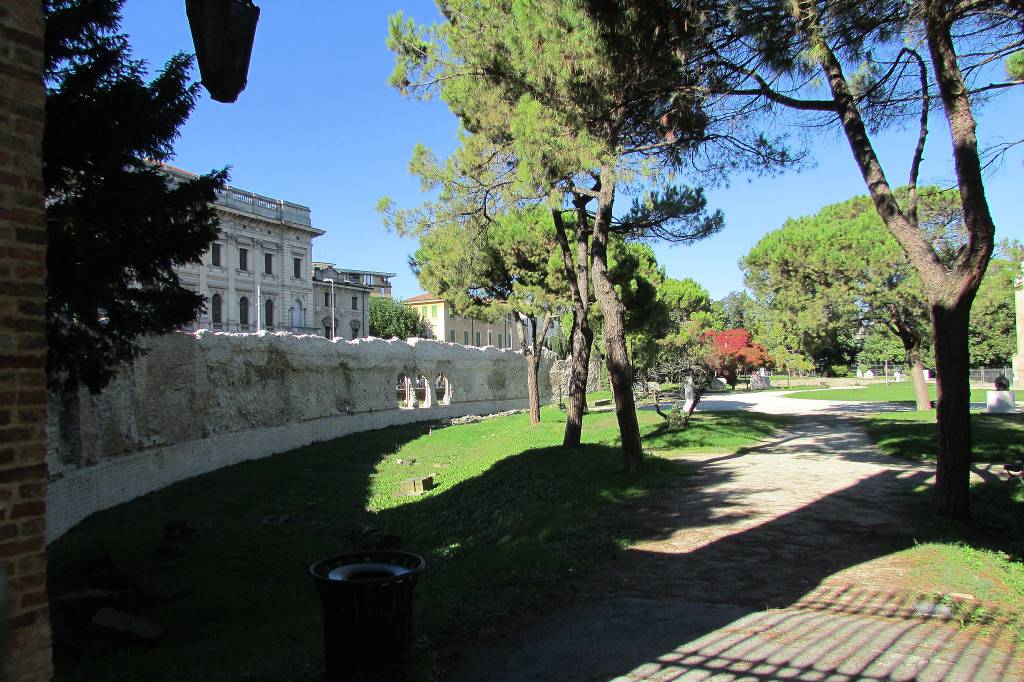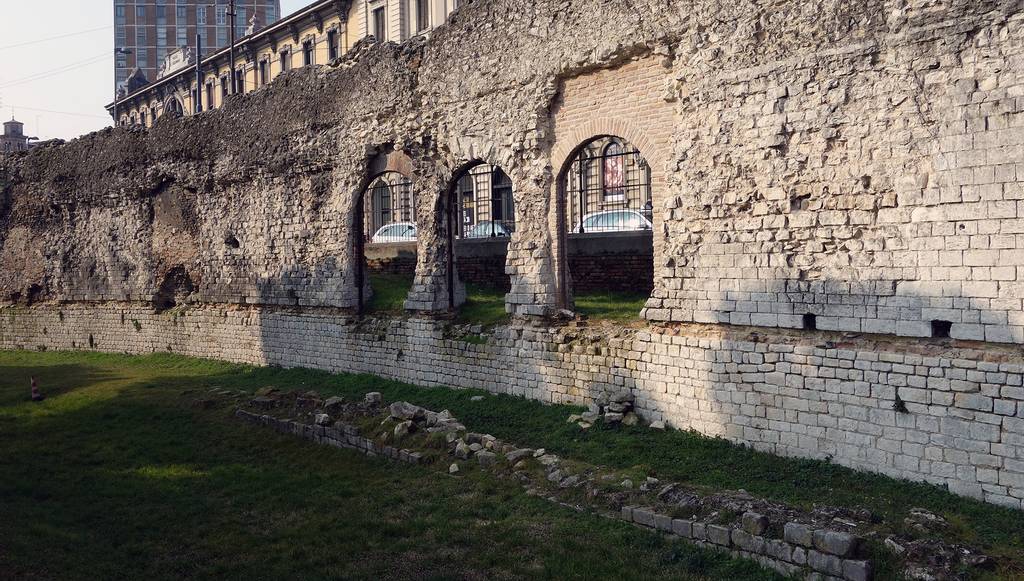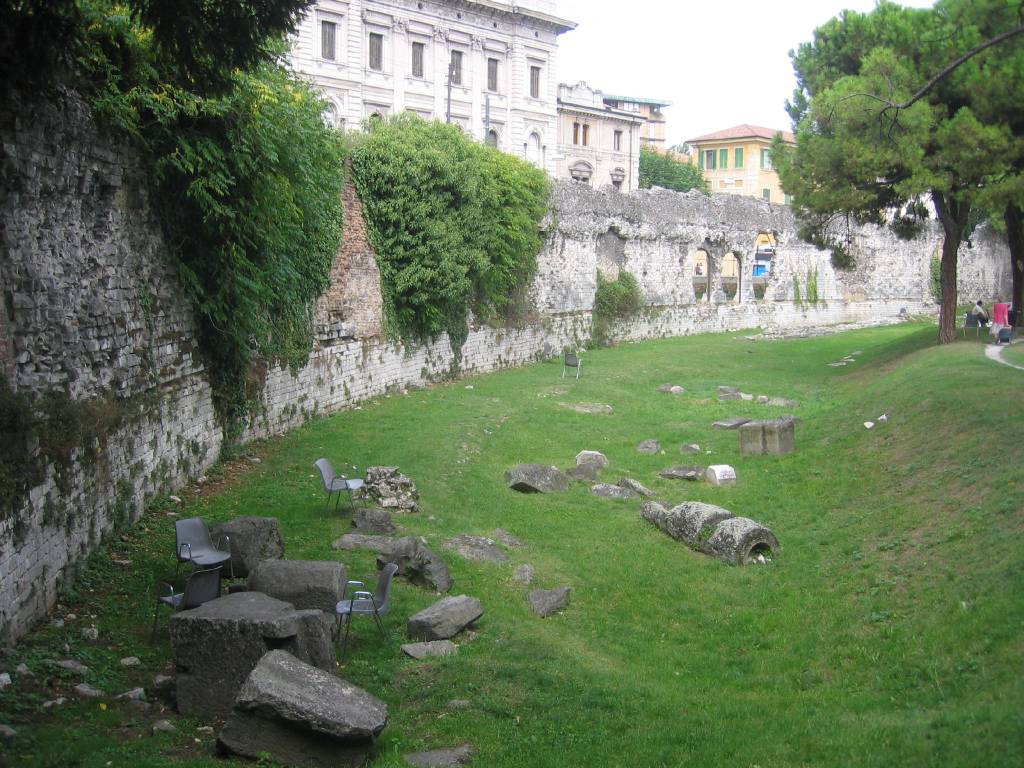The Roman Arena and the Arena Gardens
The Roman Arena of Padua was an amphitheatre used for gladiator games in the ancient Patavium. The Arena ruins are now part of the Giardini dell'Arena park.

The Roman Arena of Padua is one of the few still visible buildings of the ancient Roman Patavium. Today, only a few ruins remain part of the bearing walls and a series of arches.
The remains of the Arena have recently undergone a cleaning and restoration process. In parallel, an excavation project is also underway to bring to light the original structures of the Arena, floors and foundations, buried over the centuries by numerous stratifications and subsequent building works.
The Roman Arena was built around 70 AD. in the Claudian-Flavia age and was mainly used for gladiatorial games. Its dimensions were similar to those of the Verona Arena; the amphitheatre had an elliptical plan, on which stood eighty two-tiered arches and contained various levels of bleachers for spectators.
The Arena had two large access gates: the Triumphalis, at the entrance to Piazza Eremitani, which gave access to the spectators, and on the opposite side was the Libitinensis, where the bodies of fallen gladiators were brought out from the Arena.
The Arena was demolished during the Middle Ages and transformed into a pit as its stones and marbles were used to construct new buildings.
The elliptical foundation is now part of the Arena Gardens, Padua’s central city park, which hosts events, market fairs, theatrical performances, and film screenings in the summer.
The Arena Gardens
The Giardini dell'Arena park develops between Corso Garibaldi, Piazza Eremitani and Tronco Maestro – one of canals of Bacchiglione that crosses Padua.
The main entrance is located in Corso Garibaldi, in front of the fifteenth-century Palazzo Cavalli, the seat of the Museum of Anthropology of Padua. A small square in front of the entrance houses a marble statue of Giuseppe Garibaldi, made in 1866 by Ambrogio Borghi. The secondary entrances are located in Piazza Eremitani and Via Porciglia.
The gardens are a splendid green space of about 28,000 square meters, full of historical plants and flower beds, with a delightful fountain and a series of avenues where are placed the busts of illustrious personalities from Padua’s rich history. Among them are the architect and art critic Pietro Selvatico and the playwright Angelo Beolco, known as Ruzante, whose bust was made in bronze by the Russian sculptor Sergei Zelikson.
The large main tree-lined avenue that cuts the Gardens in two was named after Giorgio Perlasca, a Paduan diplomat who, during the Second World War, saved the lives of more than five thousand Hungarian Jews from deportation to Nazi extermination camps, about four times more than those saved by Oskar Schindler.
The park is furnished with numerous benches, has food and drinks kiosks with open-air seating area, a playground for children with colourful slides and swings, and an area dedicated to dogs.
Notes
The Arena Gardens are open every day of the year, starting at 07.00 in the morning.
In the summer months, from June to September, the closure is set at 20.40, in May and September at 20.00, in April and October at 19.30, while from November to March, it is at 17.45. Admission is free.
We welcome all contributions, no matter how small. Even a spelling correction is greatly appreciated.
All submissions are reviewed before being published.
Continue to changelog-

© 'Padova - Giardini dell'Arena' by MarkusMark is licensed under CC BY-SA 4.0 Attribution copied to clipboard Failed copying attribution to clipboard -

© 'Roman Arena Wall, Padua' by profzucker is licensed under CC BY-NC-SA 4.0 Attribution copied to clipboard Failed copying attribution to clipboard -

© 'Remains of the roman arena in the giardino della arena' by skunks is licensed under CC BY-ND 4.0 Attribution copied to clipboard Failed copying attribution to clipboard -

We welcome all contributions.
All submissions are reviewed before being published.
We welcome all contributions, no matter how small. Even a spelling correction is greatly appreciated.
All submissions are reviewed before being published.
Continue to changelogWe welcome all contributions, no matter how small. Even a spelling correction is greatly appreciated.
All submissions are reviewed before being published.
Continue to changelogWe welcome all contributions, no matter how small. Even a spelling correction is greatly appreciated.
All submissions are reviewed before being published.
Continue to changelogCategory
Cost
-
34 m
The Scrovegni Chapel houses one of the most outstanding masterpieces of figurative art of all time, the complete fresco cycle created by Giotto
-
130 m
The most important Paduan complex of museums features the Archaeological Museum and the Museum of Medieval and Modern Art in a charming former convent.
-
144 m
Part of the Eremitani Civic Museums complex, the palazzo houses the Museum of Applied and Decorative Arts and the Bottacin Museum in its rooms.
-
183 m
The church, partially destroyed in 1944, preserves the remains of the splendid frescoes painted by Guariento and Andrea Mantegna
-
In Padua, the pedestrian streets from the city centre are known as Liston, an area extending from Piazza Garibaldi all along to Prato della Valle.



